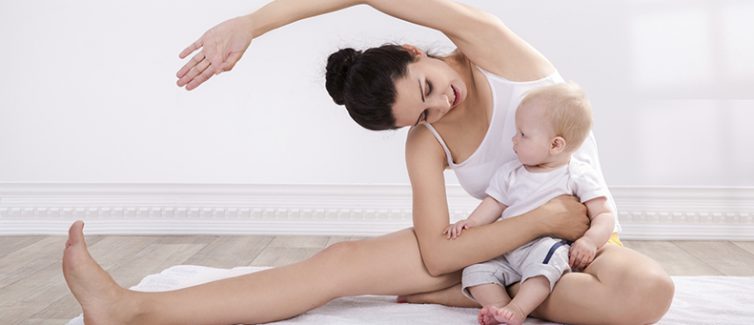When can I return to exercise after childbirth?
Unfortunately, there is no simple answer to this question, and I’m going to use “running” as an example of high-impact exercise in this article.
We’ll start with a hormone called relaxin which is released into your system in the early stages of your pregnancy. Relaxin relaxes your muscles/joints/ligaments to help prepare your pelvis for childbirth, BUT, relaxin it doesn’t just affect your pelvis, it affects every joint in your body, AND, it stays in your system for up to 6 months after birth, which makes your body more susceptible to injury.
As a result, your ankles, knees, shoulders, pelvis and spine aren’t as stable as they once were. So, think of the chain of events when you run, from when your heel strikes the pavement, to when it lifts off the ground again to take the next stride – almost every joint in your body (which is in an unstable state remember), gets jolted. The risk of injury is high, and that’s why low-impact activity is prescribed for postnatal women.
A supportive running shoe is a must for any runner, regardless of their experience. Get a proper foot assessment before you pound the pavements again, and remember, it’s not uncommon for pregnant women’s feet to increase by up to a shoe size, so are you sure those trainers you’re about to slip on fit you accordingly?
Regardless of whether you’re breast or bottle feeding, chances are, your breasts will feel uncomfortable when performing high-impact exercise, unless you’re wearing a properly fitted sports bra.
Next up is your pelvic floor. If it isn’t strong, chances are, you’ll wee yourself the first time you go out for a run and could do yourself some everlasting damage. Not an attractive look, or indeed a sensible idea. If you’re having to wear, or even contemplating wearing an incontinence pad, ladies: “Houston, we have a problem!”.
So, you can start running again, if, and only if:
a) your pelvic floor is in check,
b) you’ve done a couple of months’ worth of work on pelvic stabilisation exercise eg Pilates or core-based exercise to ensure your pelvic floor, core and abdominals are in a supportive state,
c) running was a regular activity for you prior to getting pregnant,
d) you’ve invested in a good sports bra, AND,
e) you’re wearing new, shiny, well-fitting trainers.
Experienced runners know that the only way to increase their speed and stamina is to do “interval training”, so, I’ll finish by saying, if you haven’t even heard of this type of training, then this really proves your lack of experience, so ask yourself, is running really an appropriate activity for you, right now?
